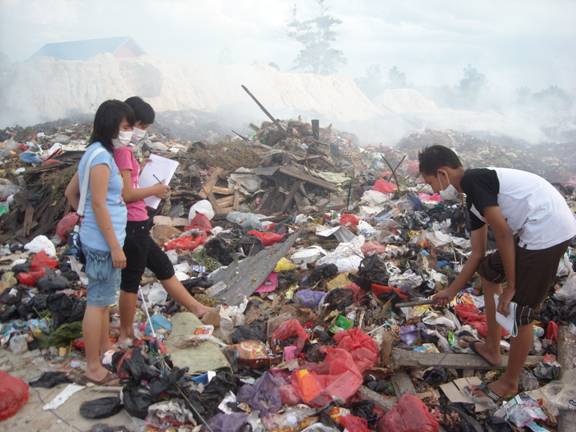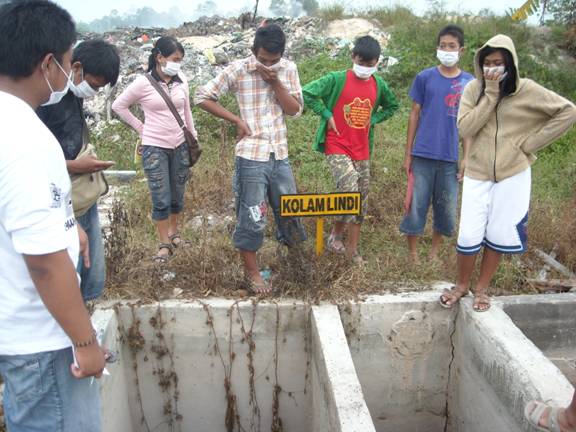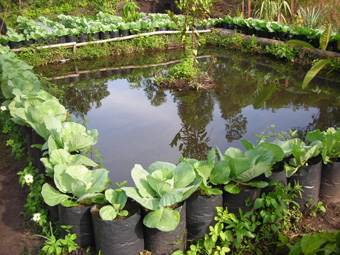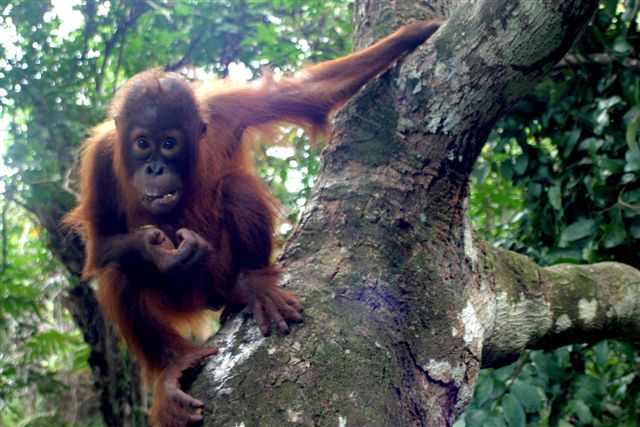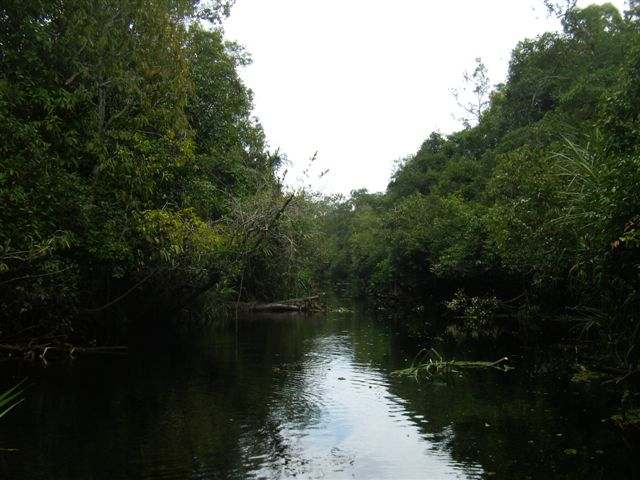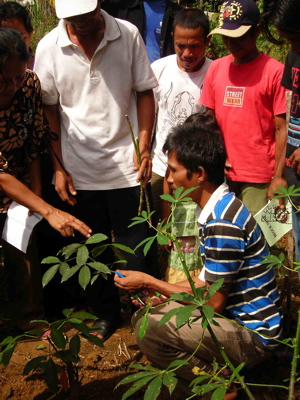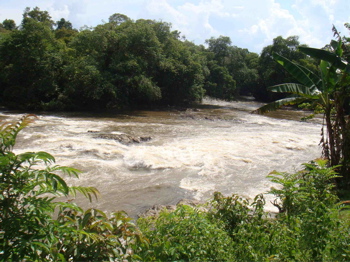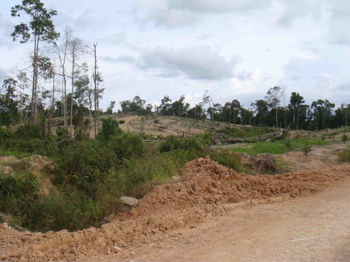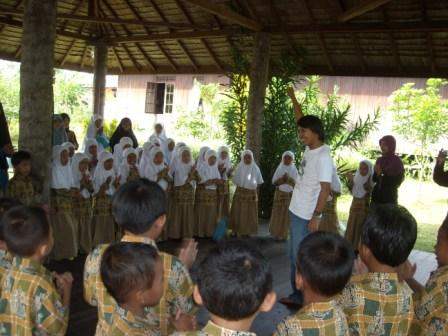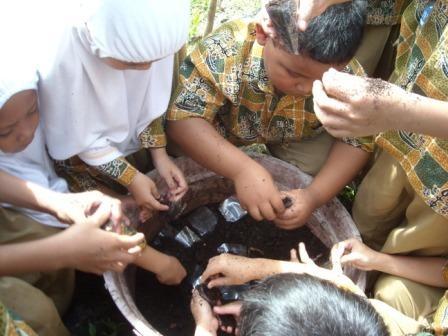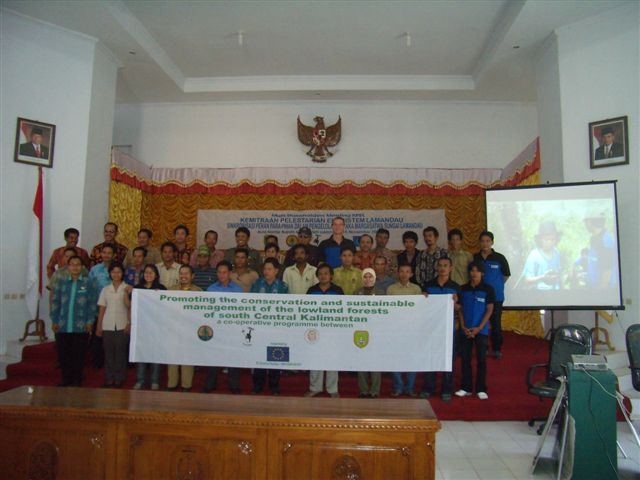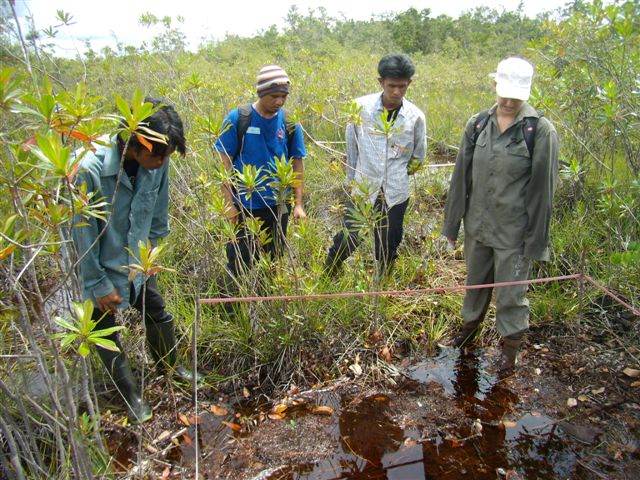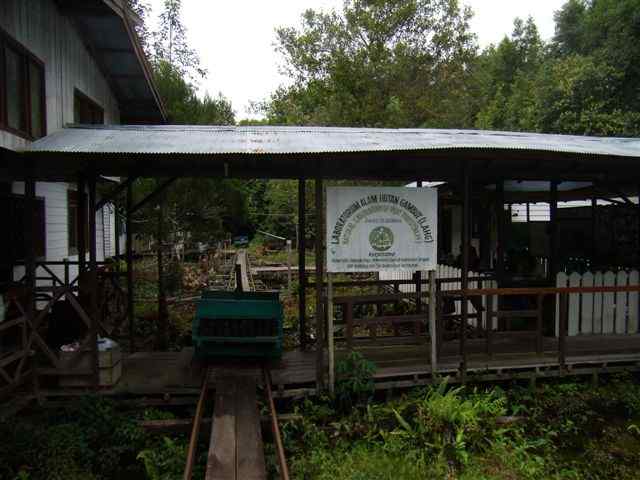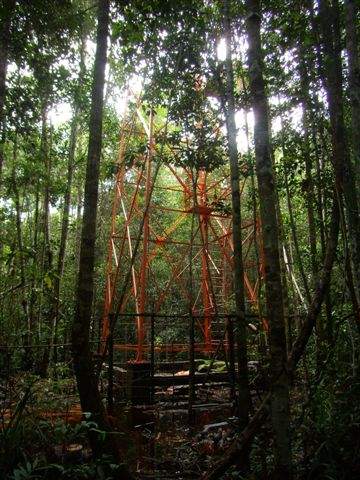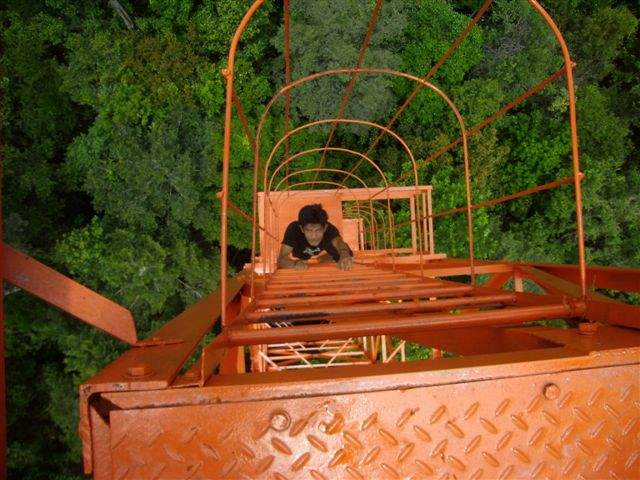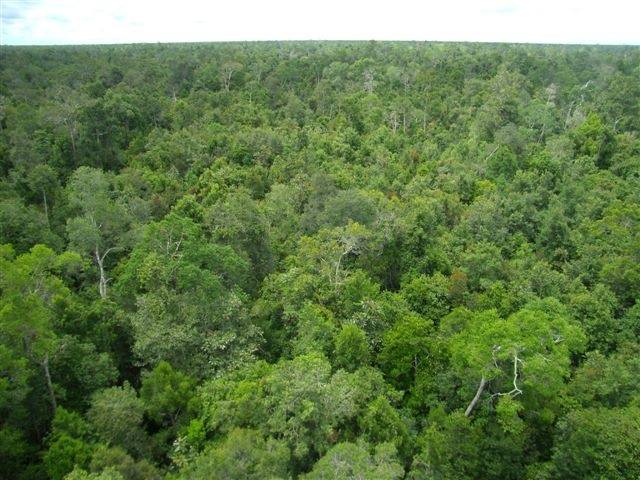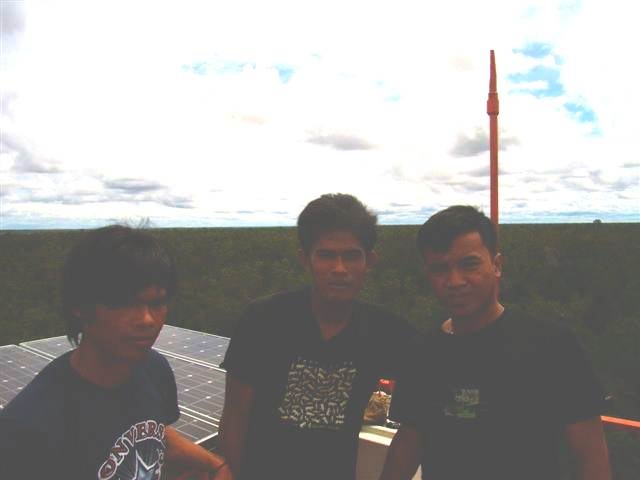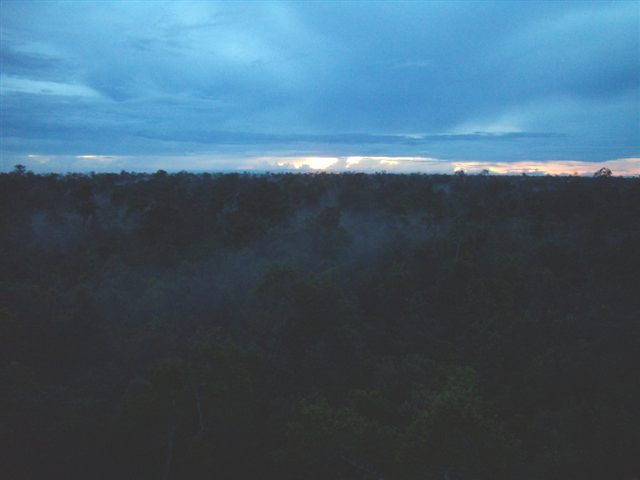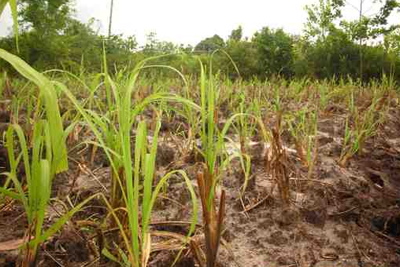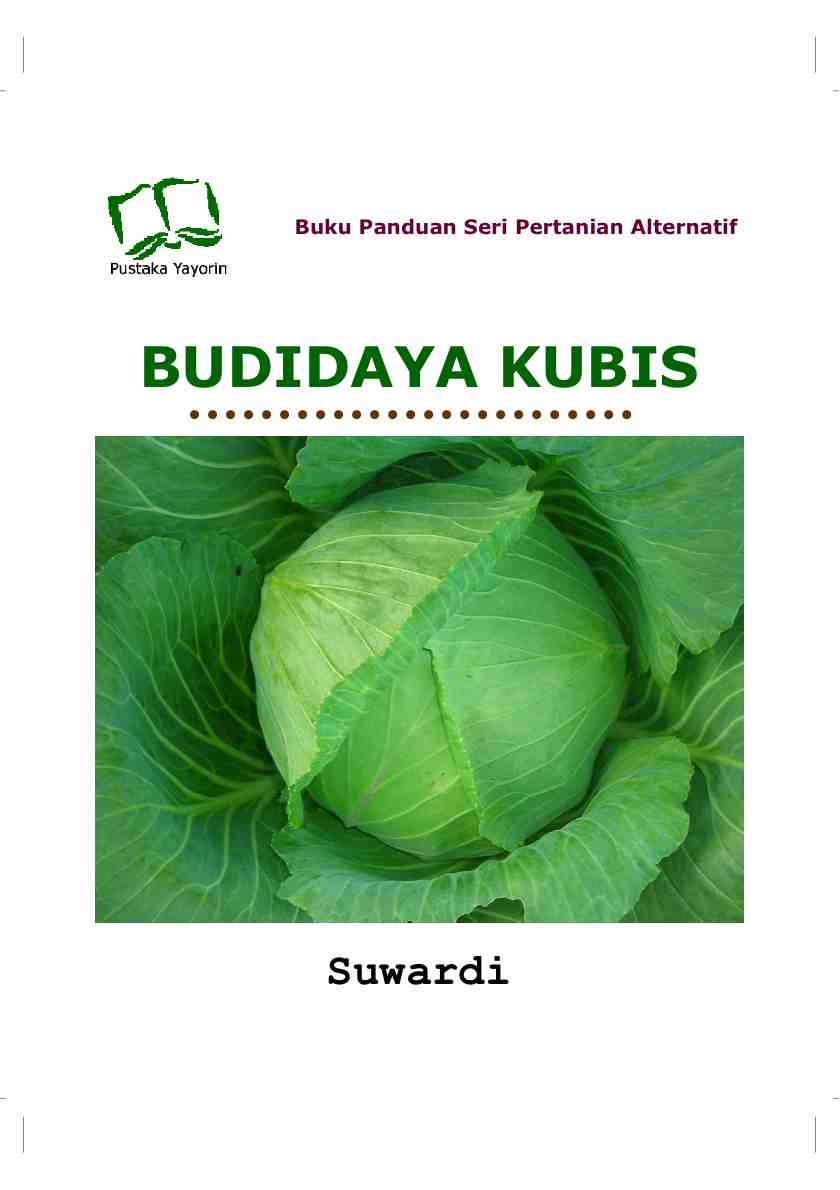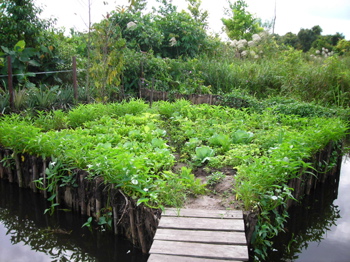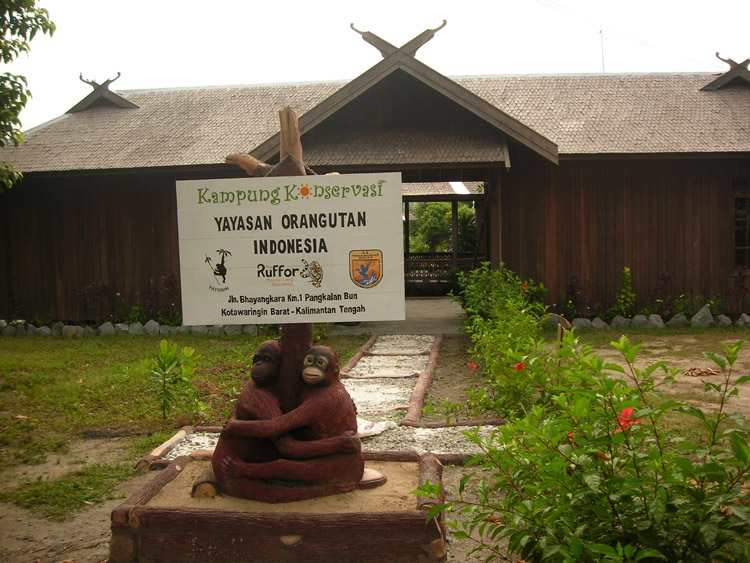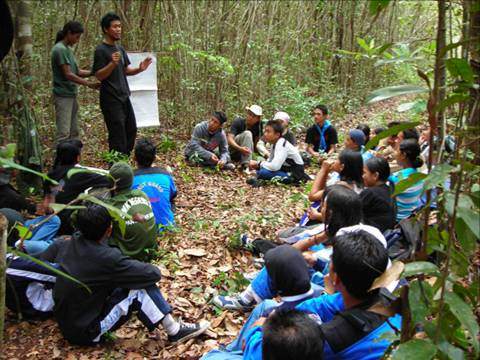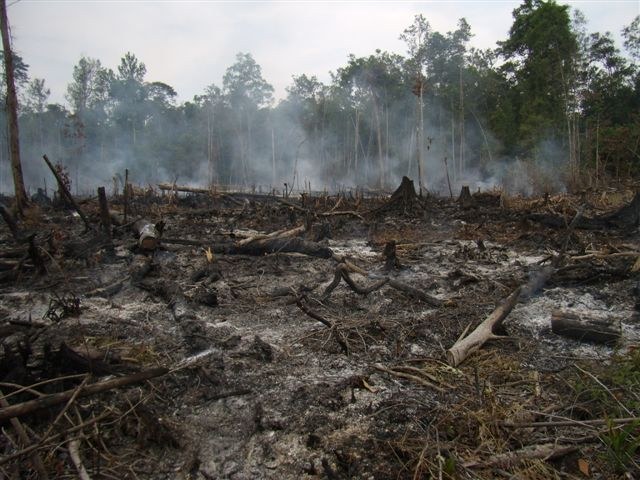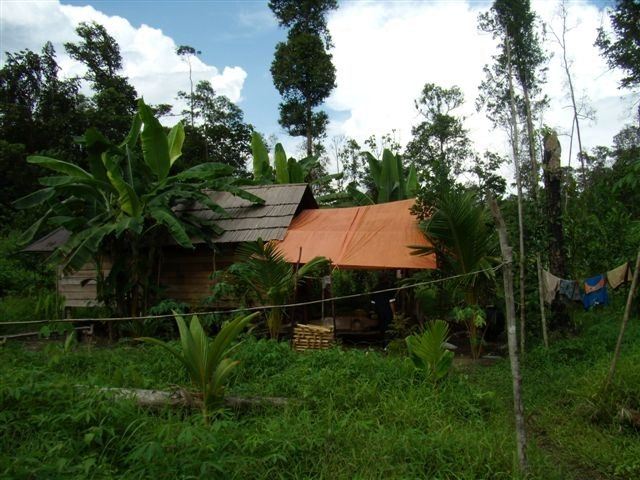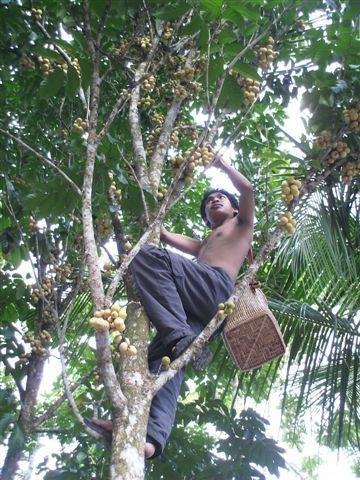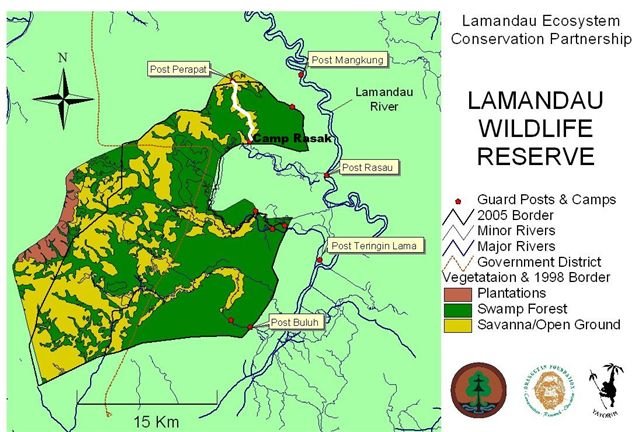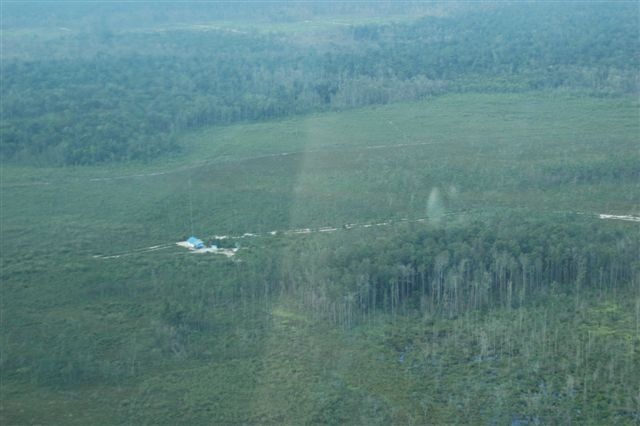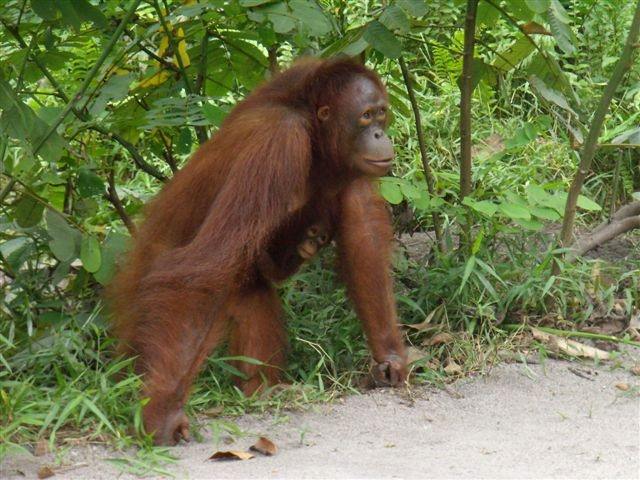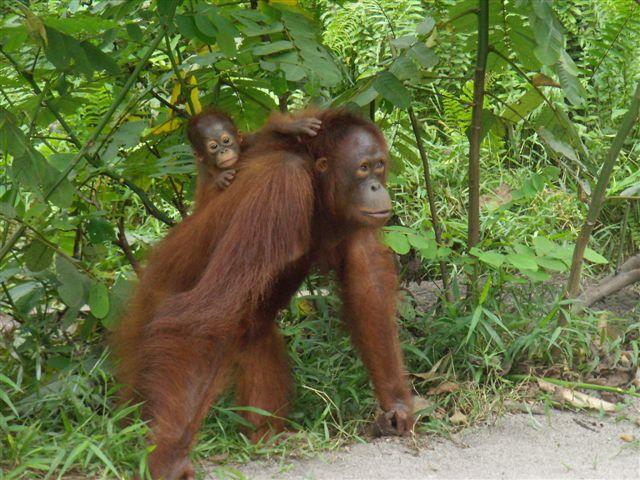The smoke from garbage burning started to hurt our eyes...million of flies swarmed around us...and the unmistakable aroma of garbage welcomed us as we drove into this local waste collecting location. A trash-picker moved quickly passed us toward the incoming yellow garbage truck; he wanted to be the first to find anything inside that he could sell.

Burning garbage at Pasir Panjang waste collection centre.
Student participating in Yayorin's environmental extracurricular activity seemed a little bit bewildered this afternoon. The main subject of today’s discussion was garbage – its role on the environment, its problems and management. It was obvious that they had never seen as much garbage in their lives and probably felt quite overwhelmed by it.
Most of the students did not even know that such place exists in their city. Many could not even say where the garbage they produced at home or at school went to. In the beginning, they were not happy being ”dragged” into this disgusting place and could not stand the smell. With the passing of time, though, they started to understand why we brought them there and involved entusiastically in the learning process.
In this meeting we asked them to identify the types of garbage they could find in an area of 1m x 1m. They then had to identify which ones were organic and which were inorganic. They were also asked to pay attention to how the garbage was collected, transported and managed.
The Pasir Panjang Waste Collecting Location is the largest in this city and its surrounding areas. This is where all of the waste of the city finally goes to. Unfortunately, like most garbage collecting locations in Indonesia, the concept of garbage management is through burning. What was ironic was the big sign we saw there that clearly said "Do Not Burn the Garbage"!
The students had a tour around the Location. They found an abandoned composting house, filtering pond and a monitoring well. The well was located about 50 meters from the collection area, and the water inside was quite clean. It was supposed to mean that the soil water was in good condition.
The students took home with them a valuable learning experience. We hope that now they realise where their garbage goes, and how the waste can put a really heavy burden on the environment. Next time they want to throw their garbage on the street or anywhere else inappropriate, we wish they will stop and remember their unique experience at the ”garbage place”.
Thanks,
Riyandoko and Sally (Yayasan Orangutan Indonesian www.yayorin.org)


